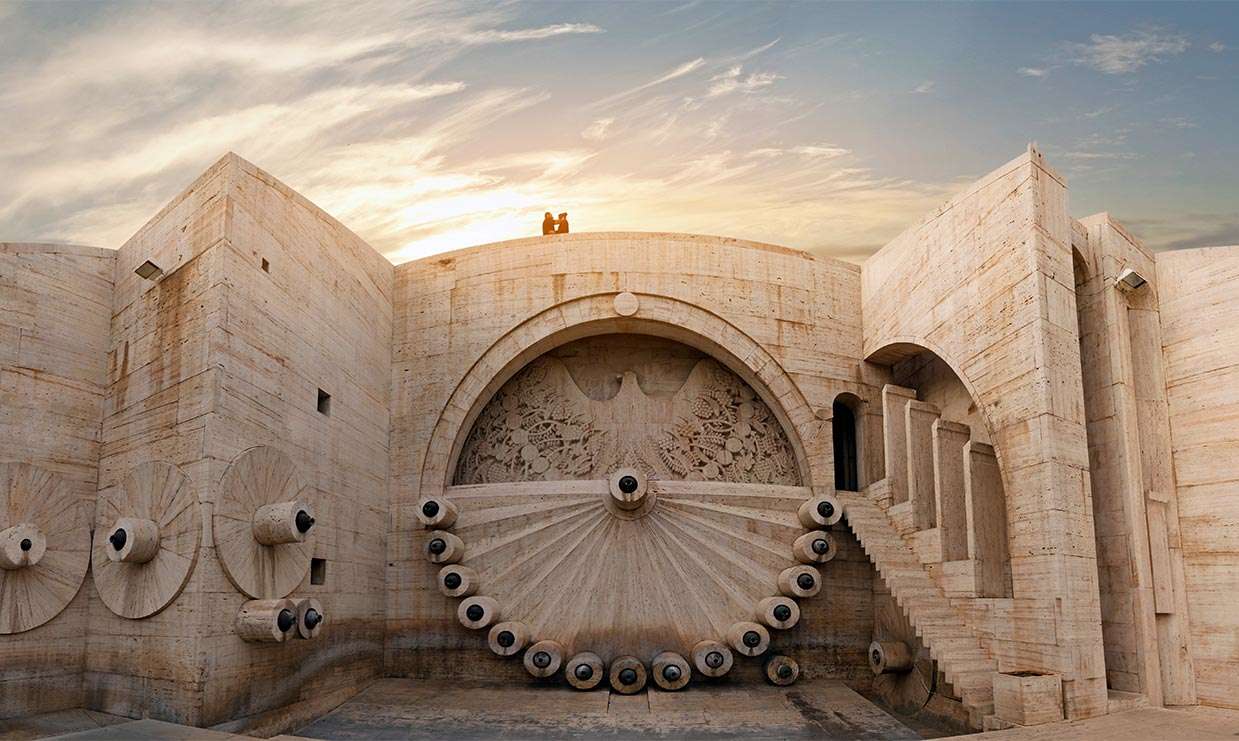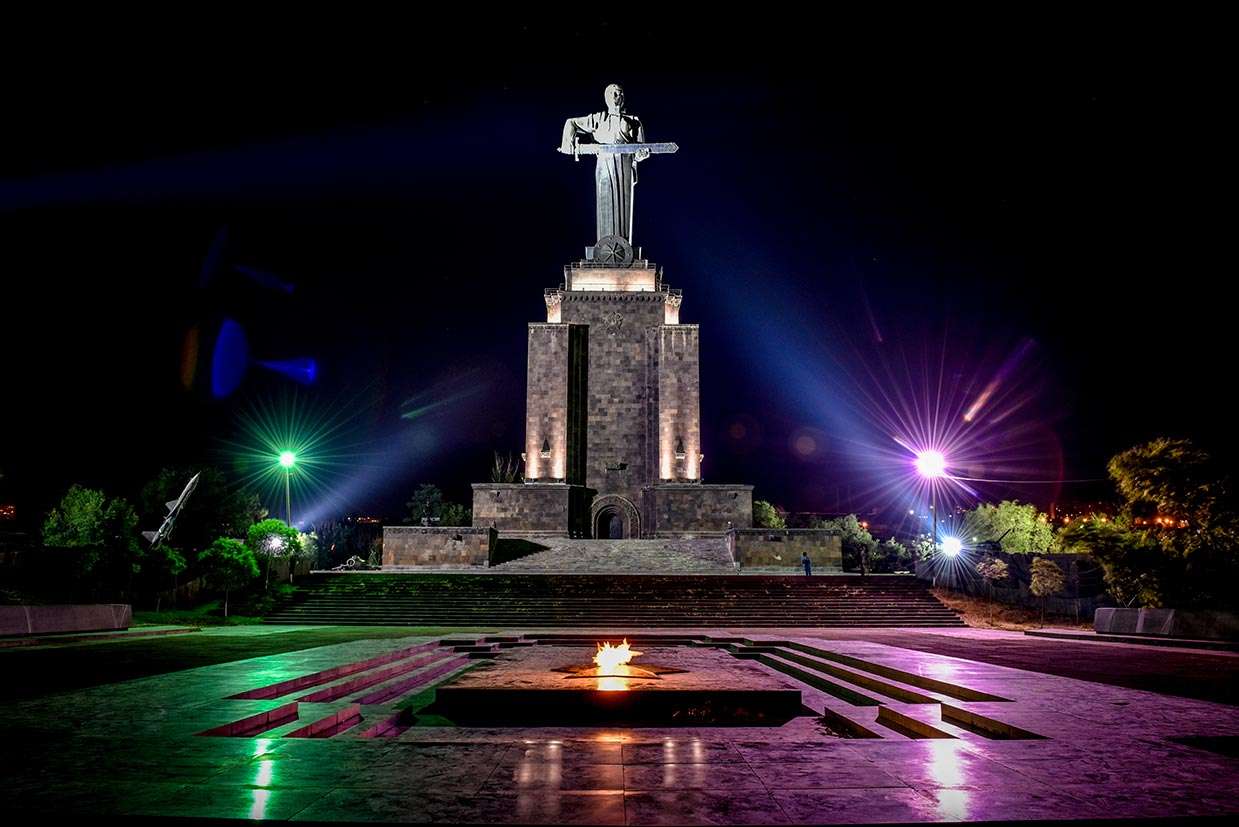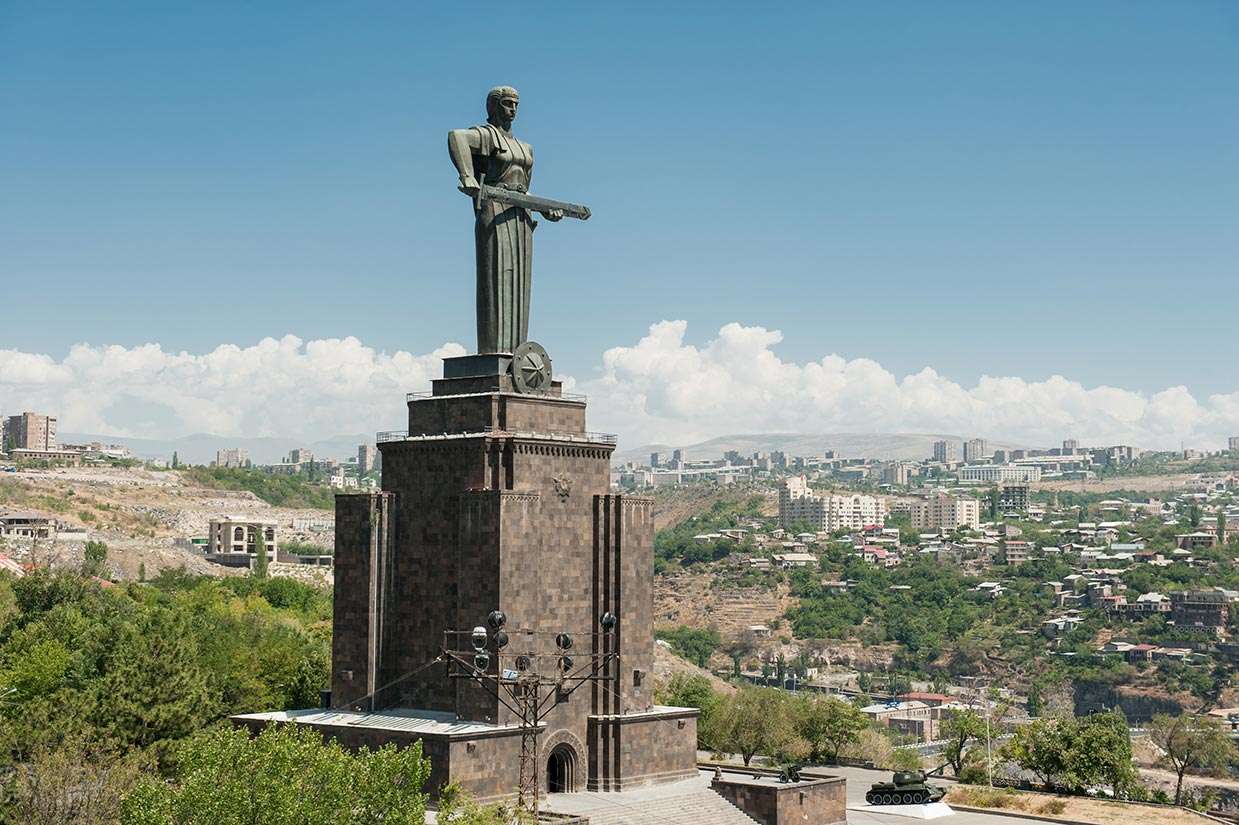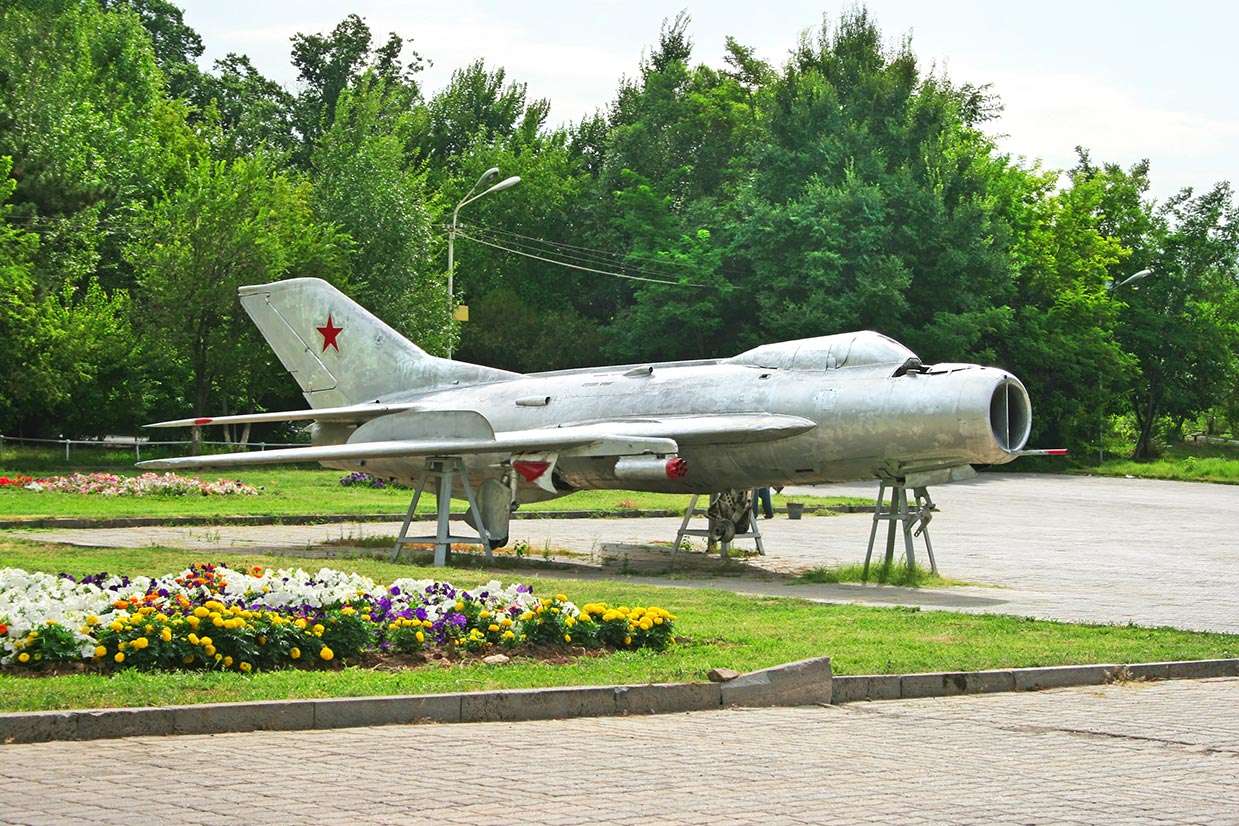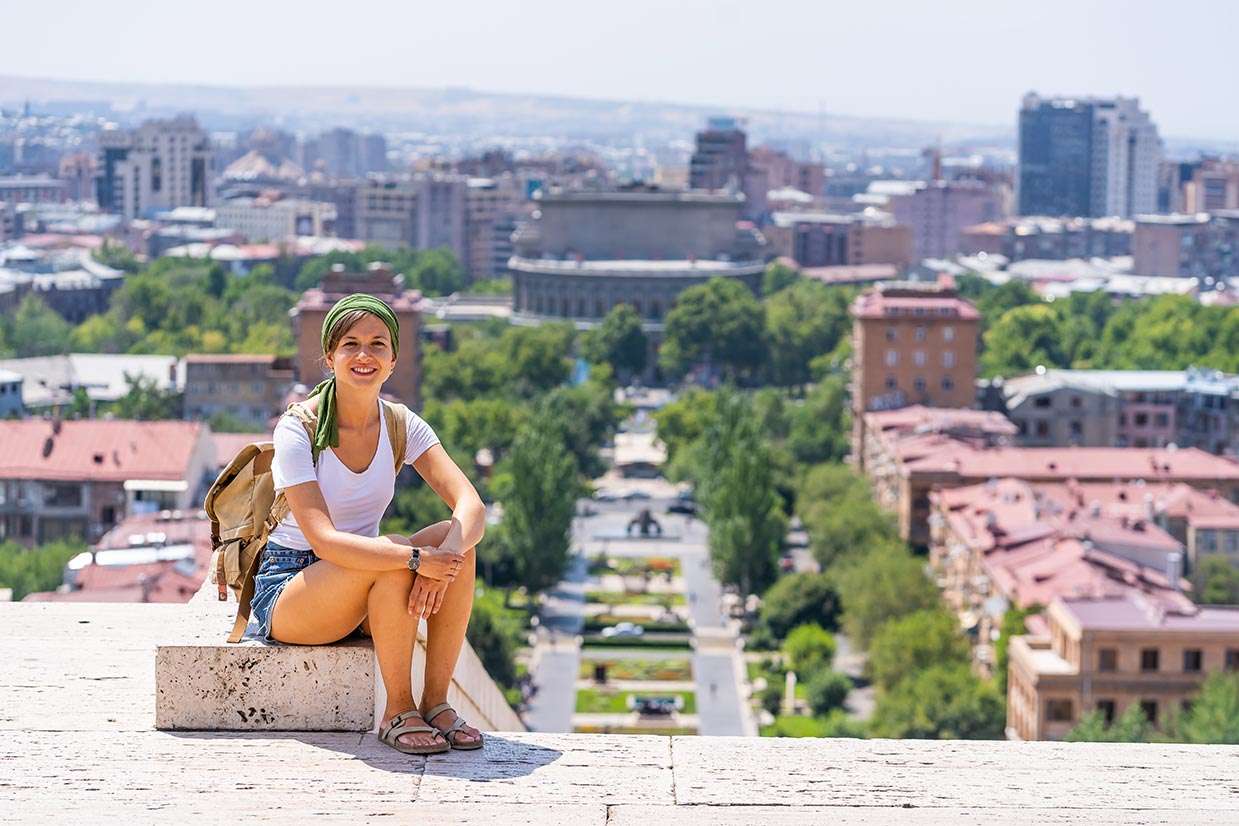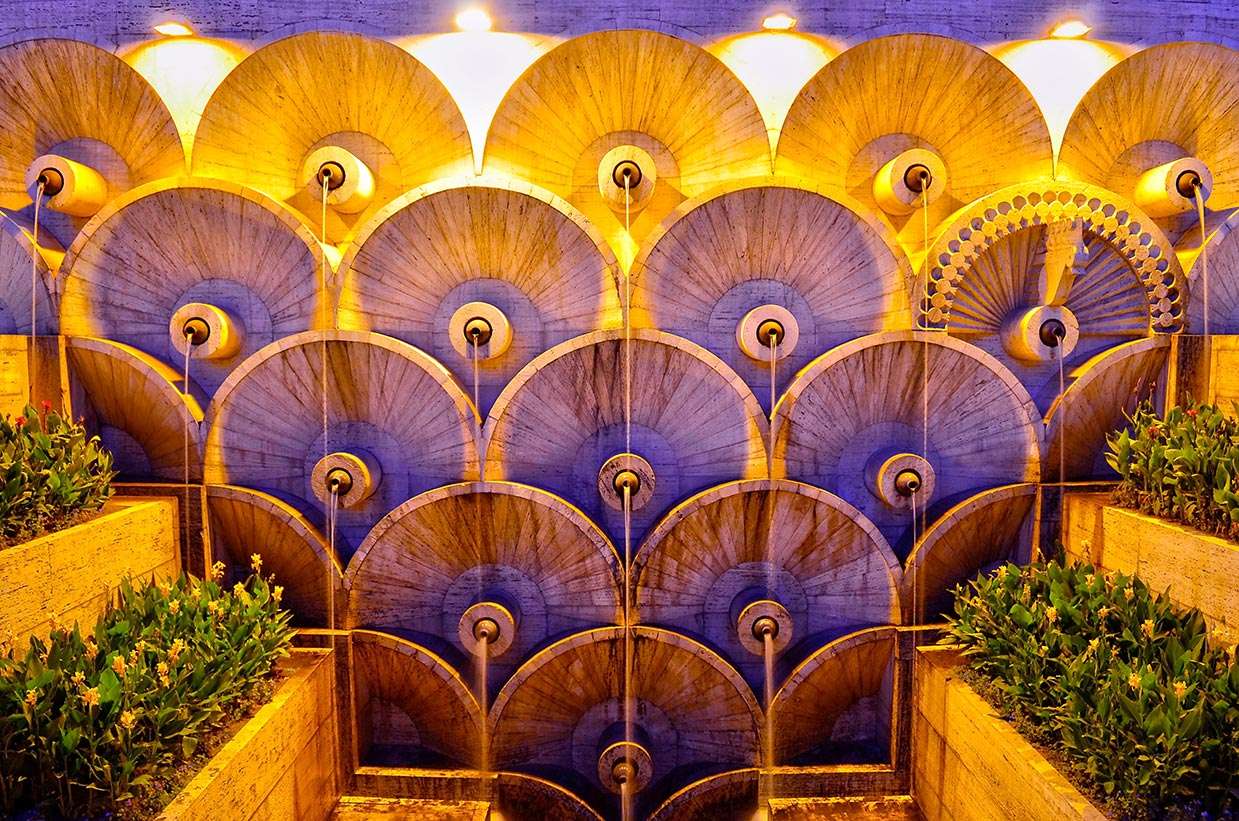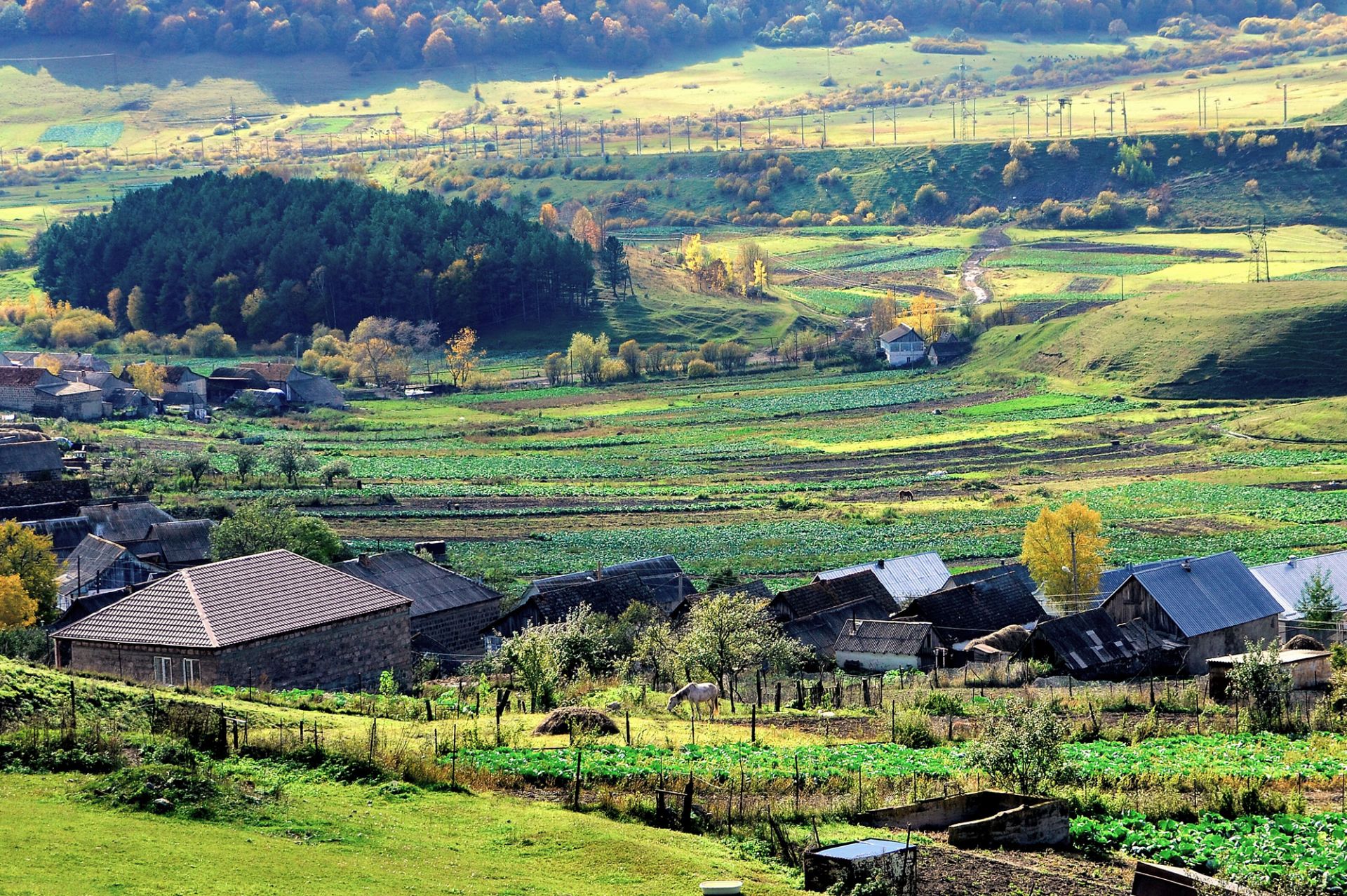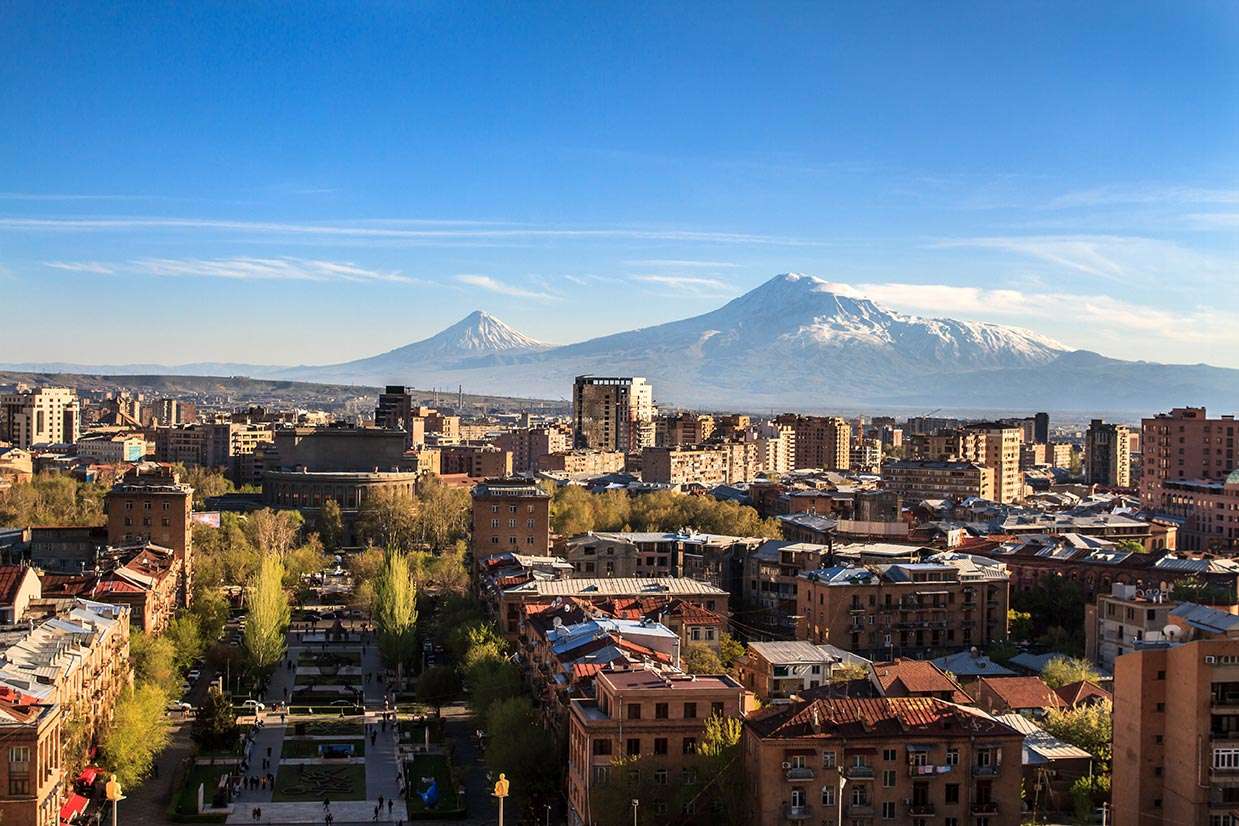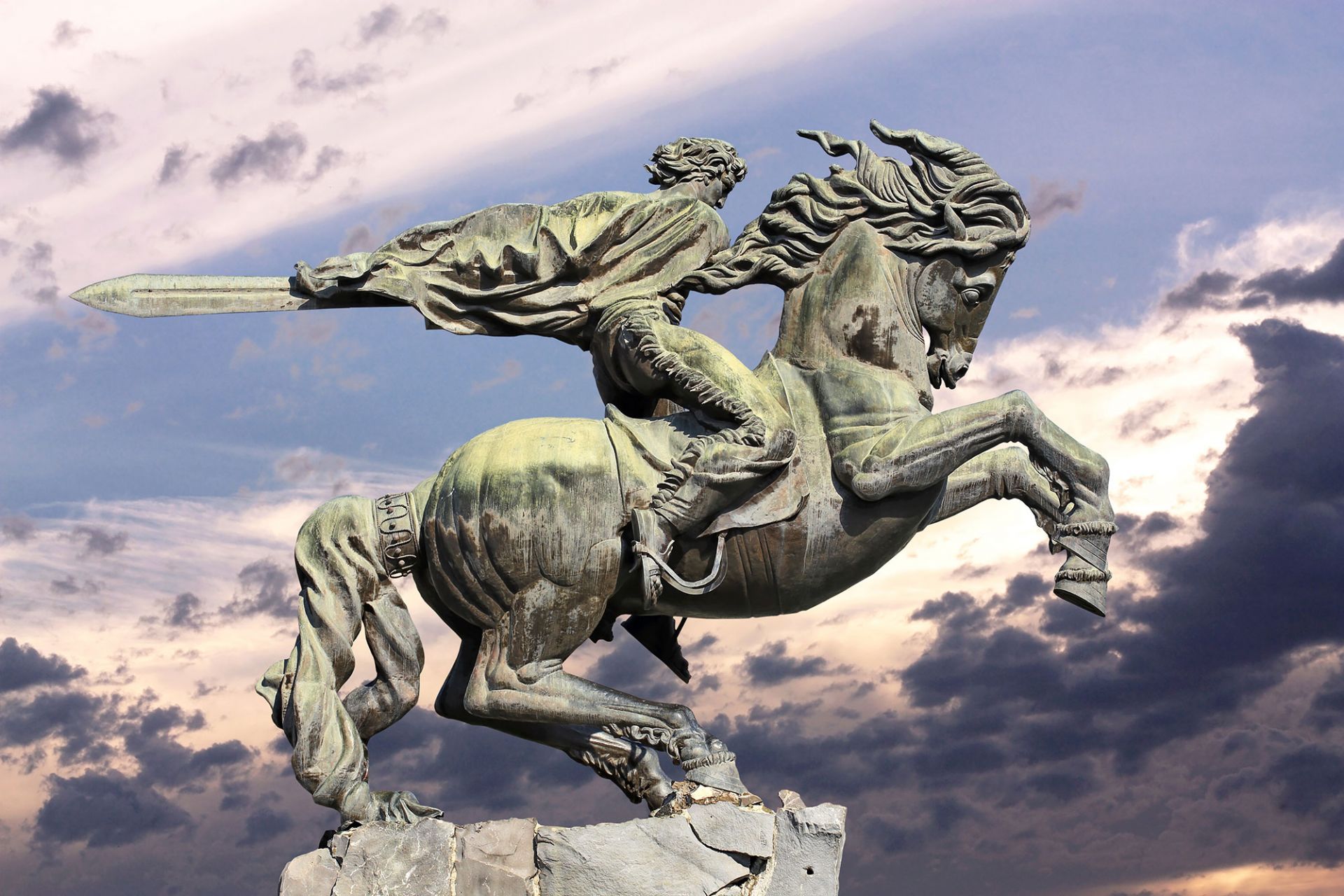Victory Park and Cascade
The Cascade is a huge limestone staircase in Yerevan. It connects the city center known as Ketron with the Monument District. The construction of the Cascade began in 1971, which was designed by the architects Jim Torosyan, Aslan Mkhitaryan and Sargis Gurzadyan, although a part of it was completed in 1980. The second phase began in 2002 and lasted until 2009. In the early 2000s, the complex was handed over to an American-Armenian businessman and collector Gerard Cafesjian, during which the complex was further reconstructed. A huge museum complex was planned to be built until the top of the staircase, but it remains unfinished until now. Within the Cascade, below the exterior staircase, there are seven escalators that rise up along the entire complex.
The exterior of the Cascade has several levels decorated with fountains and modernist sculptures from the Cafesjian collection. The staircase offers its visitors a breathtaking view over the center of Yerevan and Mount Ararat. At the base of the Cascade, one may uncover the garden with the artworks of contemporary sculptures such as Botero. There are a number of cafes and restaurants located on both sides of the Cascade which are frequented by locals and tourists. In spring, summer and early autumn periods, the spectators may attend classical and jazz concerts, while sitting on the steps of the complex.
Victory Park is a large park at the top of the Cascade in Yerevan. The park bears this name in memory of the Armenian soldiers of the Soviet Union, who participated in World War II. The park is a large forested area with an artificial lake, an amusement park, cafes, the statue, the museum of Mayr Hayastan (Mother Armenia) and a comprehensive view unfolding the center of Yerevan. Today's statue of Mother Armenia replaces a monumental statue of Joseph Stalin, which was erected as a victory monument to the Great Patriotic War. The statue was considered a brilliant work of art by the sculptor Sergei Merkurov. The pedestal was designed by architect Raphael Israelyan. Realizing that the fame of the dictators is very short, Israyelyan created the pedestal which resembles an Armenian church, at least from inside. In contrast to the black tuff of the exterior, the interior was bright, which was a real delight to the eye and reminded the seventh-century church of St. Hripsime in Etchmiadzin. In 1967, Stalin's statue was removed (two workers were killed during the construction) and replaced by the Mother Armenia statue designed by Ara Harutyunyan. Mother Armenia is the feminine personalization of Armenia. The Mother Armenia statue symbolizes peace through strength. It reminds the views some of the most outstanding women in Armenian history, like Sose Mayrik (mother) and others who took the gun to help their men to fight against the Turkish army and Kurdish attackers. It also highlights the significant role and value ascribed to older female members of an Armenian family.
Its strategic location on a hill uncovering the entire view of Yerevan, makes it look like a guardian of the capital city. Every May 9th, thousands of people pass by the statue of Mother Armenia to pay tribute to the fallen Armenians.
